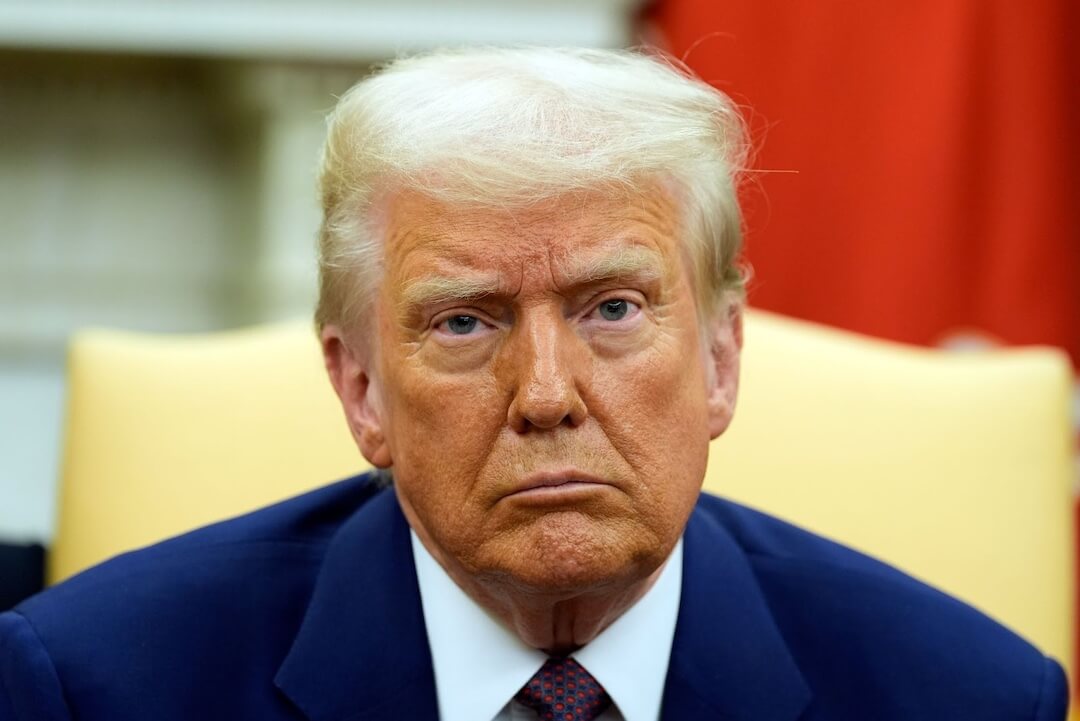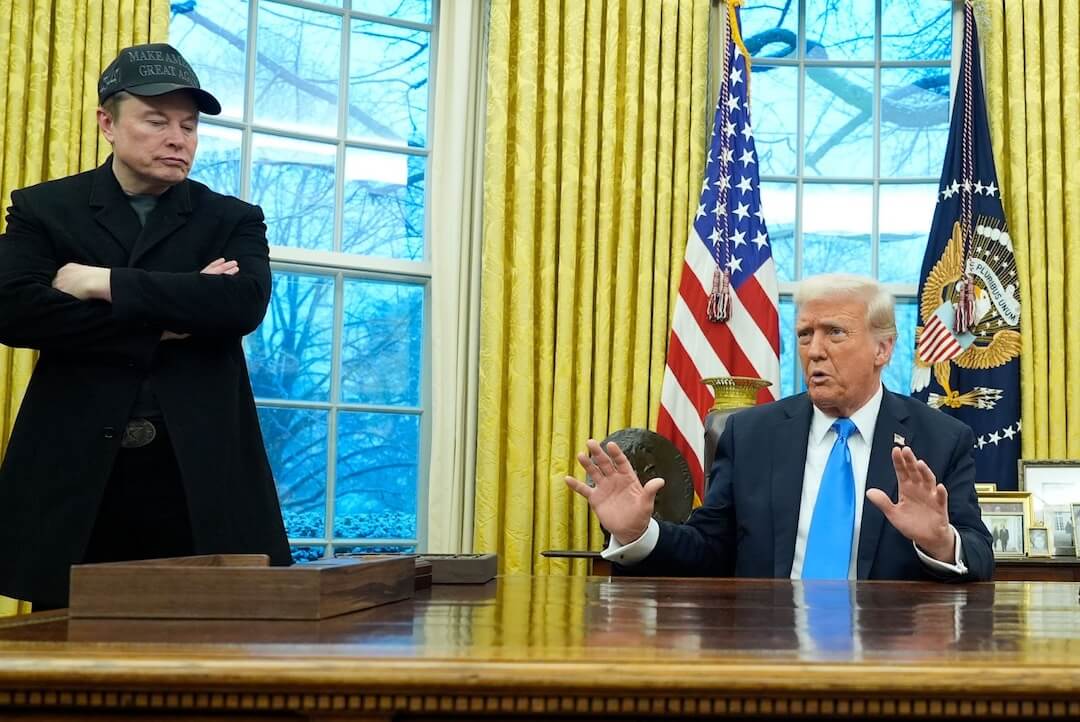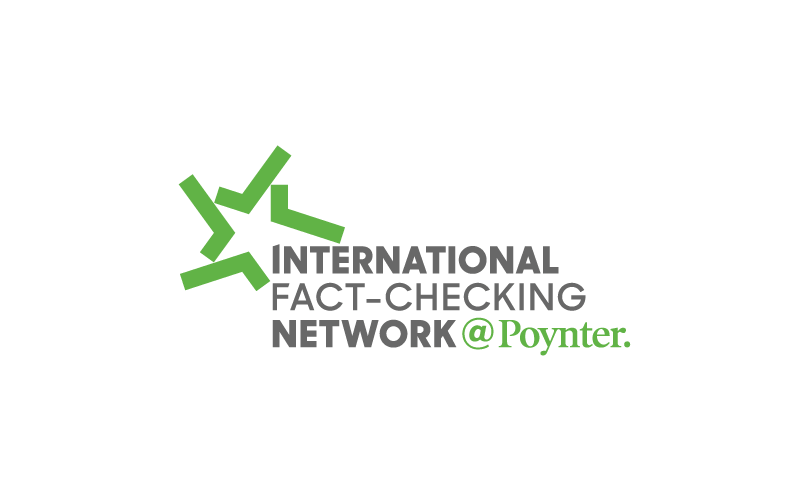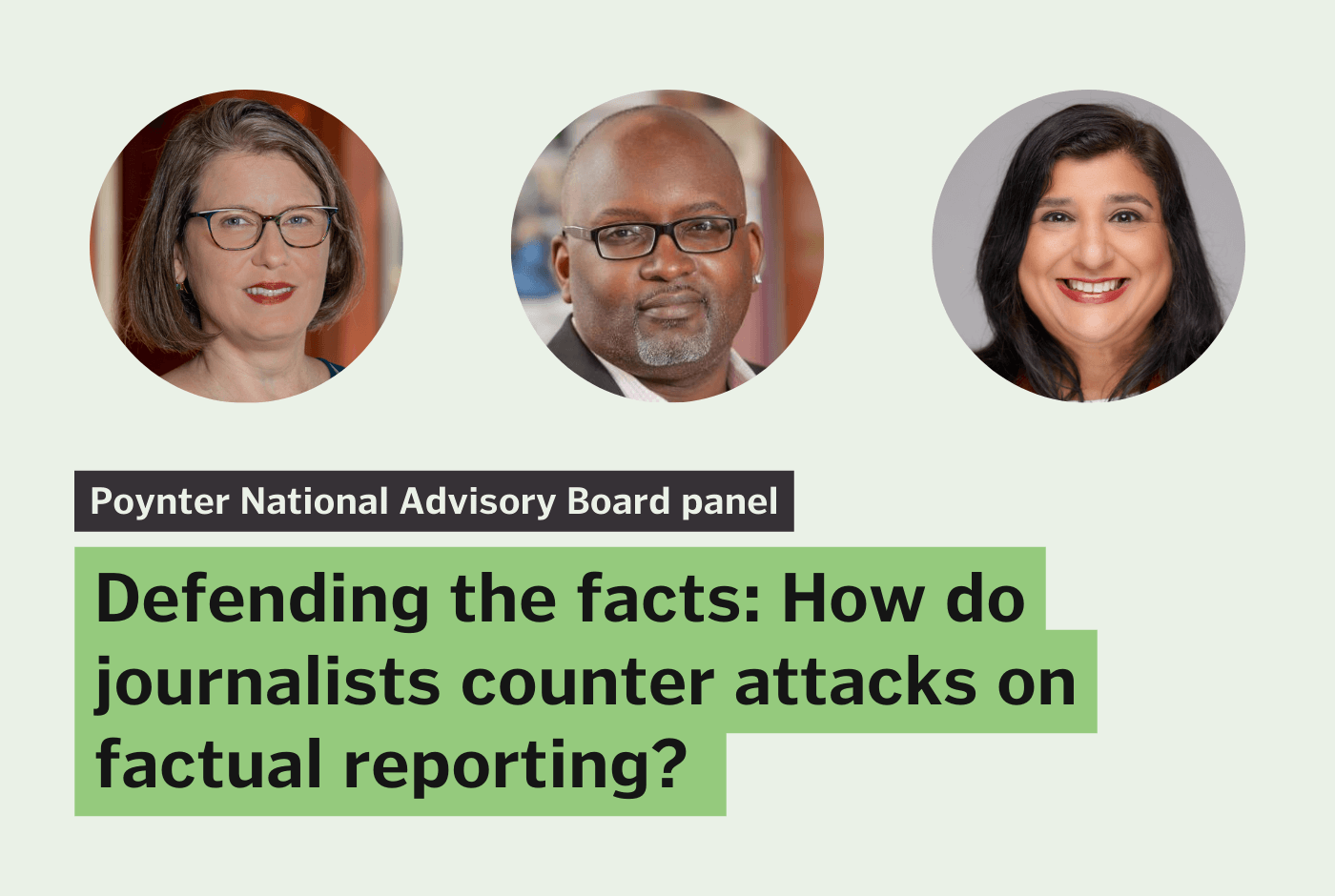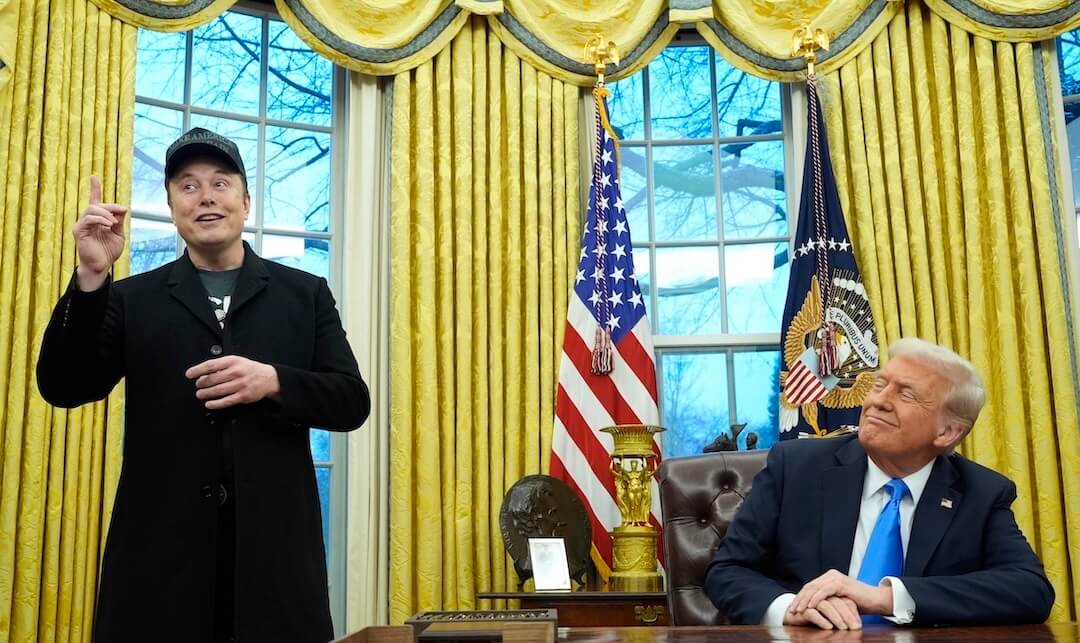 Covering COVID-19 is a daily Poynter briefing of story ideas about the coronavirus and other timely topics for journalists, written by senior faculty Al Tompkins. Sign up here to have it delivered to your inbox every weekday morning.
Covering COVID-19 is a daily Poynter briefing of story ideas about the coronavirus and other timely topics for journalists, written by senior faculty Al Tompkins. Sign up here to have it delivered to your inbox every weekday morning.
Tomorrow, the Centers for Disease Control and Prevention’s Advisory Committee on Immunization Practices will meet to discuss, among other things, the priorities for COVID-19 vaccines.
The agenda for the 2 p.m. Eastern time virtual meeting lists two main issues: allocating vaccines and thinking through how to administer the vaccines.
The meeting comes nine days before the CDC will consider Pfizer’s emergency application for the approval of its experimental vaccine, which it says is about 95% effective in preventing COVID-19. Food and Drug Administration Commissioner Dr. Stephen M. Hahn would not say exactly how many days it might take for the government to act on Pfizer’s application.
“While we cannot predict how long the FDA’s review will take,” he said, “the FDA will review the request as expeditiously as possible, while still doing so in a thorough and science-based manner, so that we can help make available a vaccine that the American people deserve as soon as possible.”
British regulators may approve the Pfizer vaccine this week and may be able to start administering it on Dec. 7.
Last week, when the CDC’s ACIP met, it started drafting two groups that will likely be in the first phase of immunizations. This will be the foundation of what the group will vote on tomorrow.
The Phase 1A group will include people who work in “hospitals, long-term care facilities, outpatient home health care, pharmacies, emergency medical personnel, and public health workers.”
Phase 1B includes “essential workers, people with high-risk medical conditions, and adults 65 years and older. Essential workers include people who work in food and agriculture, food service, transportation, education, energy, police, firefighters, manufacturing, IT, communication, water and wastewater. People with high risk medical conditions include obesity, and severe obesity, diabetes, (cryptogenic organizing pneumonia), heart condition, chronic kidney cancer, smoking, solid organ transplant, and sickle cell disease.”
It is probable that journalists will be included in this Phase 1B group.
Morning Brew says those groups include:
- The elderly (about 50 million Americans ages 65-plus)
- People with underlying conditions (80 to 100 million)
- Essential workers (40 to 60 million)
Among the fundamental decisions that shape who should be first in line for a COVID-19 vaccine is a question: “What is the main goal of the vaccine program?” Morning Brew explains there are two ways to think about vaccine priorities:
Before the swine flu pandemic, the strategy was to vaccinate the most vulnerable first. But in 2009, researchers published a study suggesting a focus on vaccinating the biggest spreaders — in the case of swine flu, children ages 5-19 — to protect everyone else.
Think about how that decision would shape the vaccine protocols of the COVID-19 epidemic. If we wanted to control the spread, then jail and prison populations, homeless shelters, college fraternity houses and nursing home staff and residents would be our first focus. But protecting the most vulnerable might include allotting the vaccine to seniors who rarely leave home, smokers and health care workers.
Of course, the choices may not be strictly binary. But there are not enough vaccines available for everybody right away.
The ACIP sends its guidance to the wider CDC, which then sets immunization schedules for the country. But ultimately, it is up to states to adopt the CDC’s guidelines or draft their own.
The ACIP may also take up concerns about how to distribute vaccines to racial and ethnic minorities who have been disproportionately affected by COVID-19, and address a long-held distrust of the medical establishment among those groups because of historical abuse and mistreatment.
The ACIP has also discussed something I have mentioned here; the side effects of the COVID-19 vaccines. Experts are concerned that when people feel flu-like symptoms after the first shot they might not return for the second, which is really important for the vaccine to be effective.
You likely have never heard of the ACIP, but it is the group that makes recommendations about vaccines to the CDC. It usually only meets a few times a year. You can see the list of 15 members and other advisers here. The CDC says, “Fourteen of the members have expertise in vaccinology, immunology, pediatrics, internal medicine, nursing, family medicine, virology, public health, infectious diseases, and/or preventive medicine; one member is a consumer representative who provides perspectives on the social and community aspects of vaccination.”
The ACIP does not include people who work for drug companies. It publishes its recommendations here. Every vaccine you rely on — from measles, mumps and rubella childhood vaccines to polio vaccines and shingles shots — all went through this committee for approval before they arrived in your arm.
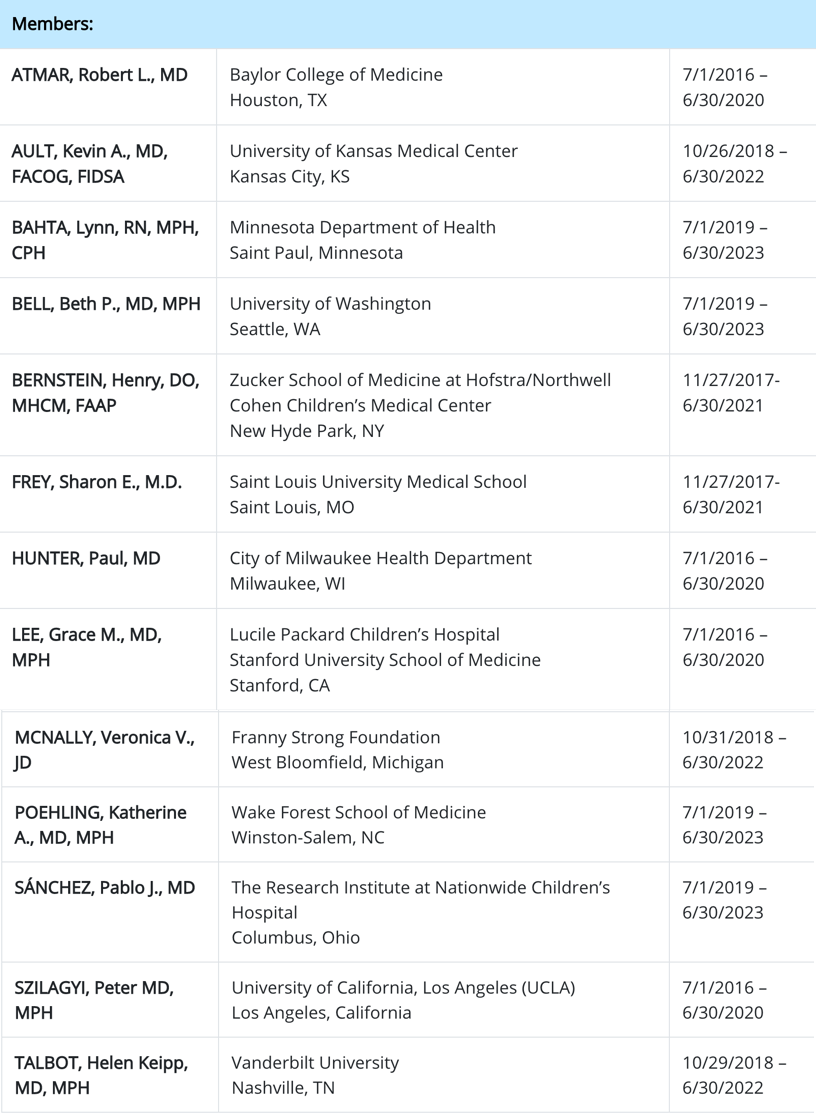
(CDC)
In short, the Tuesday meeting of an obscure CDC advisory committee is an important step in America’s plans to get control of the pandemic.
Will only the wealthy countries get vaccines first?
It won’t do a lot of good if some rich countries have a vaccine and the rest of the world does not. If most of the world is unprotected, the virus will just keep spreading.
The groups who track vaccine purchases say the richest countries have bought up most of the vaccines already. The Launch and Scale Speedometer is one such group. It says high-income countries currently hold a confirmed 3.7 billion doses, upper-middle-income countries hold 706 million doses, and lower-middle-income countries hold more than 1.7 billion doses.
The United States, Canada and the European Union plus Britain have bought up about 85% of Pfizer’s planned 1.1 billion vaccines through next year. Moderna, which will likely follow close behind Pfizer in the vaccine approval process, also is contracted to send the first 20 million doses of its vaccine to the United States. There are lots of other vaccines under development that will go elsewhere, but they are further behind in the drug trials.
Countries are hustling to get vaccine contracts signed. This weekend, for example, Peru signed a deal with Pfizer to get enough vaccines for three-quarters of Peru’s population to get a first-round shot.
Canada, Great Britain, the European Union countries and Australia are all partners in COVAX, which has the goal to “guarantee fair and equitable access for every country in the world.” The United States and Russia are not COVAX members.

COVAX and non-COVAX countries (Launch and Scale Speedometer)
An international alliance called Gavi is the procurement arm that coordinates the COVAX effort. COVAX countries agree to help pay for the research for nine vaccines under development. 80 countries have agreed to help about 92 other countries get the vaccines they will need (see a list of both here).

(Gavi)
Reuters reports that “Canada, which has reserved enough doses to vaccinate residents against COVID-19 several times over, is in talks with other governments about a plan to donate shots to lower-income countries, according to three sources familiar with the matter.” In fact, no country has contracted for more vaccines per capita than Canada.
Reuters adds, “Canada, with a population of about 38 million, has ordered up to 414 million vaccine doses through seven purchase agreements. In the unlikely event all seven are approved, that would be enough to vaccinate the country more than five times over. It is expected most of the early vaccines will require two doses.”
[the_ad id=”667826″]
What is the Oxford-AstraZeneca controversy?

A general view of AstraZeneca offices and the corporate logo in Cambridge, England. (AP Photo/Alastair Grant)
Months ago, the British-based Oxford-AstraZeneca drug trials appeared to be the most promising of all of the vaccine trials. But last week, the trials produced confusing results that still have not been clarified. The researchers will try, this week, to release data that will answer questions.
Oxford researchers announced their vaccine had 62% efficacy, which is way short of the more than 90% rate of effectiveness for the Pfizer and Moderna vaccines. But then the Oxford-AstraZeneca researchers said they had a smaller group of volunteers who got a lower dose of the vaccine and that lower dose produced a 90% efficacy rate. Then the researchers added a layer of head-scratching details by saying the lower dose was actually given by mistake.
Watch The Lancet website for the new data this week. Also watch for American regulators to tell the Oxford researchers to start their Phase 3 trials over to be sure of the results.
The Oxford drug trial is especially important because this vaccine was going to be less expensive than others and the vaccine could be stored in everyday refrigerators, not the super-cold storage needed for other vaccines.
New York phases out hybrid learning

Parents and children gather in front of New York’s City Hall to protest the closing of public schools, Thursday, Nov. 19, 2020. (AP Photo/Mark Lennihan)
Big city schools have set the stage for what others around the country have done. New York City is changing its rules and, starting Dec. 7, will bring the youngest students back into classrooms. The city is abandoning the 3% positivity threshold that has kept schools closed. The new rules largely end the New York City “hybrid” classes that put students in classrooms some days and kept them learning at home on others.
Dec. 11: One more date to worry (a little) about
The government will probably find a way not to shut down on Dec. 11. Probably.
That depends on Congress and President Donald Trump coming to terms on the 12 bills that comprise the federal budget document that must be passed in the next two weeks to avoid a government shutdown. There is a chance that Democrats will insist that a new stimulus bill be attached to the budget bill. Republicans want $2 billion to build more of the border wall and a pay freeze for federal workers in 2021.
But a new complication just arose about how to classify Veterans Affairs health care spending. It does not sound like a big deal, but it is enough to put a passage by Dec. 11 in at least modest doubt.
White House chief of staff Mark Meadows would not say last week that a government shutdown is “off the table.”
Prisoners claiming unemployment
You may have missed the extraordinary story out of California where 20,000 people being held in prisons and jails have fraudulently claimed more than $140 million in COVID-related unemployment benefits. One guy landed 16 claims in what law enforcement says may be one of the, if not the, single biggest fraud case in state history.
The total payout may be as high as $1 billion. Thousands of prisoners — sometimes using their own names, sometimes others’ names — filed for the $600 a week unemployment benefits that the government paid between March and August. 133 names matching death row prisoners received jobless benefits.
35 states have systems in place that crossmatch jobless claims and prisoner rolls, but 15 states, including California, do not. Prosecutors say there is a fairly good chance most of the money will never be repaid.
The California caper is just part of the national wave of fraud involving the federal unemployment payments.
In Colorado, cybercriminals took advantage of the unemployment system so aggressively that over the course of one month, 75 percent of applications were ruled fraudulent. In Pennsylvania, thousands of inmates applied and qualified for benefits before getting caught.
The assistance program was particularly vulnerable because, since it is specifically for self-employed people or independent contractors, there is no employer to verify an applicant’s income. While the CARES Act legislation asked applicants to submit documents to prove their income and allowed people to receive the minimum benefit payment of $172 per week without any supporting paperwork.
While Congress is still kicking around the notion of some kind of another stimulus bill, it would be a good time to find out how federal and state agencies are doing with investigating fraud cases in each state and how successful they have been in recapturing the money that fraudsters claimed.
[the_ad id=”667872″]
It’s clemency and pardon season
Governors around the country have made unprecedented use of their clemency and pardon powers this year to thin jails and prisons during a pandemic. Be on the lookout for more to come in the weeks ahead.
Last week, President Trump surprised nobody when he pardoned his former national security adviser Michael Flynn.
It is quite common for outgoing presidents and governors to use their last weeks in office to issue pardons and clemency. It is most useful for journalists to look at who is being considered before the term ends. No president has used the clemency authority as sparingly as President Trump, with a month and a half to go in his term.

(Pew Research Center)
Clemency refers to multiple forms of presidential mercy. The two most common forms are pardons, which forgive past crimes and restore civil rights, and commutations, which completely or partially reduce sentences for those in prison or on community supervision. Two less-common forms are remissions, which reduce financial penalties associated with convictions, and respites, which are temporary reprieves that are usually granted to inmates for medical reasons.
While rare so far, Trump’s use of presidential clemency has caused controversy because of the nature of his pardons and commutations. Many of Trump’s clemency recipients have had a “personal or political connection to the president,” according to a July analysis by the Lawfare blog, and he has often circumvented the formal process through which clemency requests are typically considered.
The Department of Justice adds:
Under the Constitution, only federal criminal convictions, such as those adjudicated in the United States District Courts, may be pardoned by the President. In addition, the President’s pardon power extends to convictions adjudicated in the Superior Court of the District of Columbia and military court-martial proceedings. However, the President cannot pardon a state criminal offense.
The U.S. Supreme Court has called clemency the “fail safe” of the judicial system, since it empowers chief executives to correct injustices on a case-by-case basis. The Center for American Progress, a liberal public policy research and advocacy organization, says the pandemic has sharply increased clemency cases:
Several states have recently increased the use of clemency — which had been more common prior to the proliferation of tough-on-crime platforms in the mid-1980s — as part of the overall criminal justice reform movement. Oklahoma Gov. Kevin Stitt (R) granted pardons or commutations to more than 1,000 people in his first year in office. In 2020, in response to the COVID-19 pandemic, Stitt commuted the sentences of more than 450 people. Likewise, Washington Gov. Jay Inslee (D) similarly granted commutations to more than 1,100 people to contain the spread of the coronavirus in state correctional facilities.
Governors have different pardon powers in different states. In some states, including Alabama and Connecticut, an independent review board appointed by the governor has the power to grant clemencies. Here is a state-by-state list. You will recall a year ago when the governor of Kentucky granted clemency to 600 people and caused an uprising.
[the_ad id=”667878″]
We’ll be back tomorrow with a new edition of Covering COVID-19. Sign up here to get it delivered right to your inbox.




